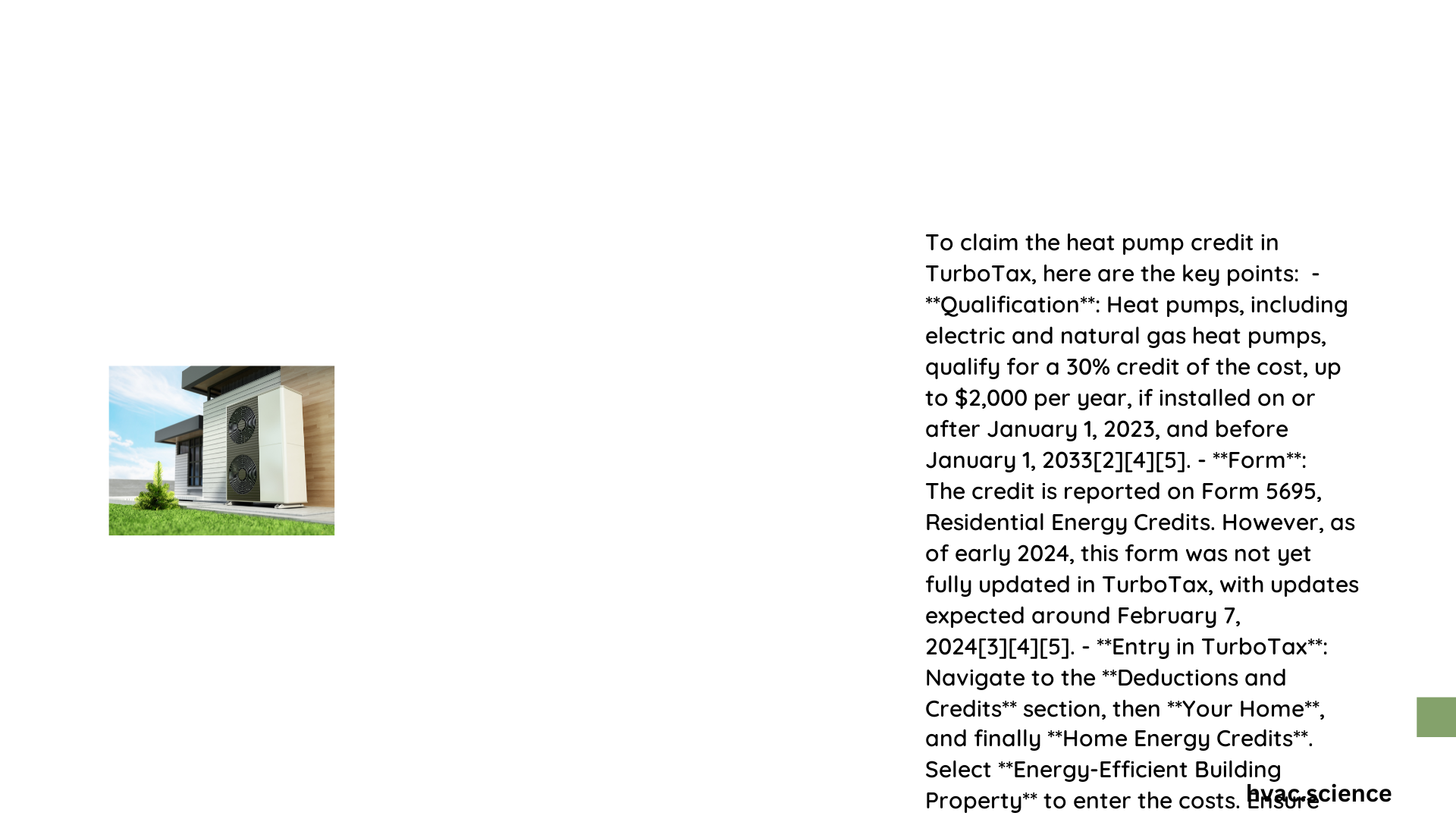The TurboTax heat pump credit offers homeowners a substantial financial incentive to upgrade their home’s heating and cooling systems. Qualifying heat pump installations can earn up to 30% tax credit, with a maximum annual benefit of $2,000, helping reduce energy costs while supporting environmentally friendly home improvements through the federal residential energy-efficient property tax credit program.
What Are the Basic Eligibility Requirements for Heat Pump Credit?
Heat pump tax credits through TurboTax require specific criteria to be met:
Qualifying Heat Pump Specifications
- Must be ENERGY STAR certified
- Meet Consortium for Energy Efficiency (CEE) efficiency standards
- Installed in existing primary or secondary residences
Technical Performance Requirements
| Heat Pump Type | SEER2 Rating | EER2 Rating | HSPF2 Rating |
|---|---|---|---|
| Ducted | ≥ 15 | ≥ 11.5 | ≥ 8.5 |
| Ductless | ≥ 16 | ≥ 12 | ≥ 9 |
How Much Tax Credit Can You Receive?

The heat pump credit calculation involves several key factors:
- Credit Percentage: 30% of total installation cost
- Maximum Annual Credit: $2,000
- Aggregate Home Improvement Limit: $1,200
- Total Potential Annual Credit: Up to $3,200
Practical Credit Calculation Example
- Heat Pump Installation Cost: $10,000
- Eligible Credit: $3,000
- Actual Credit Received: $2,000 (annual cap)
What Documentation Do You Need?
Essential documentation for claiming the TurboTax heat pump credit includes:
- Manufacturer’s written certification
- Detailed installation receipts
- Proof of ENERGY STAR certification
- Completed IRS Form 5695
Can Everyone Claim the Heat Pump Credit?
Not all scenarios qualify for the credit:
✓ Eligible:
– Existing home improvements
– Primary and secondary residences
– Homeowners paying federal income tax
✗ Ineligible:
– New construction
– Rental properties
– Installations without proper certification
What Steps Should You Take to Claim the Credit?
- Verify heat pump meets efficiency standards
- Retain all installation documentation
- Complete IRS Form 5695
- Include form with federal tax return
- Consult tax professional if uncertain
Pro Tips for Maximizing Heat Pump Credit
- Research local and state additional incentives
- Choose high-efficiency models
- Work with certified HVAC professionals
- Keep detailed records of all expenses
- Consider long-term energy savings
Common Mistakes to Avoid
- Claiming credits for previous years
- Overlooking manufacturer certification
- Failing to document installation costs
- Not understanding specific regional requirements
When Should You Apply for the Credit?
- Apply in the tax year of installation
- File amended return for corrections
- Check current year’s specific guidelines
- Be aware of potential program changes
Potential Future Changes
The heat pump tax credit landscape continues evolving:
– Potential expansion of eligible technologies
– Possible adjustment of credit percentages
– Increased focus on energy-efficient solutions
Important Note: Tax laws change frequently. Always consult a qualified tax professional for the most current guidance specific to your situation.
References:
– Rewiring America Heat Pump Tax Credits
– ENERGY STAR Heat Pump Guidelines
– IRS Energy Efficient Home Improvement Credits
